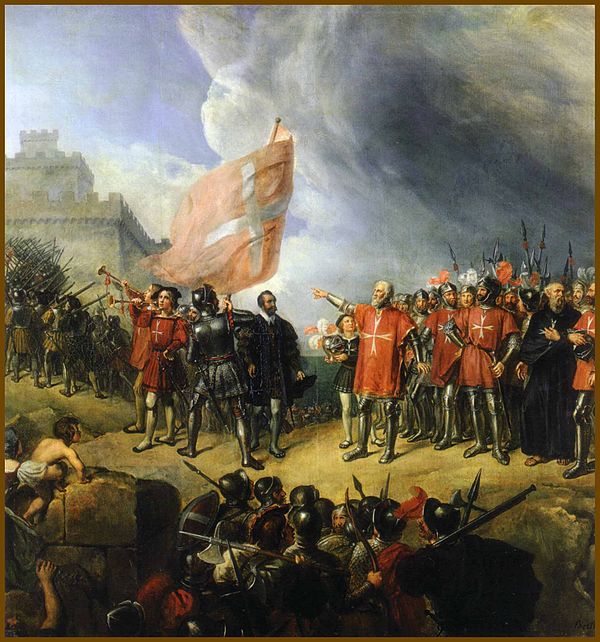The Knights of St. John, or Knights Hospitallers, had captured Rhodes in the early 14th century after the loss in 1291 of Acre, the last Crusader stronghold in Palestine. From Rhodes, they became an active part of the trade in the Aegean sea, and at times harassed Turkish shipping in the Levant to secure control over the eastern Mediterranean. A first effort by the Ottomans to capture the island was repulsed by the Order in 1480, but the continuing presence of the knights just off the southern coast of Anatolia was a major obstacle to Ottoman expansion. An earthquake shook the island in 1481.
After the siege and earthquake, the fortress was greatly strengthened against artillery according to the new school of trace italienne. In the most exposed land-facing sectors, the improvements included a thickening of the main wall, doubling of the width of the dry ditch, coupled with a transformation of the old counterscarp into massive outworks (tenailles), the construction of bulwarks around most towers, and caponiers enfilading the ditch. Gates were reduced in number, and the old battlement parapets were replaced with slanting ones suitable for artillery fights.[4] A team of masons, labourers, and slaves did the construction work, with the Muslim slaves charged with the hardest labor.[4]
In 1521, Philippe Villiers de L'Isle-Adam was elected Grand Master of the Order. Expecting a new Ottoman attack on Rhodes, he continued to strengthen the city's fortifications, and called upon the Order's knights elsewhere in Europe to come to the island's defence. The rest of Europe ignored his request for assistance, but Sir John Rawson, Prior of the Order's Irish House, came alone. The city was protected by two and, in some places three, rings of stone walls and several large bastions. The defence was assigned in sections to the different Langues. The harbour entrance was blocked by a heavy iron chain, behind which the Order's fleet was anchored.









